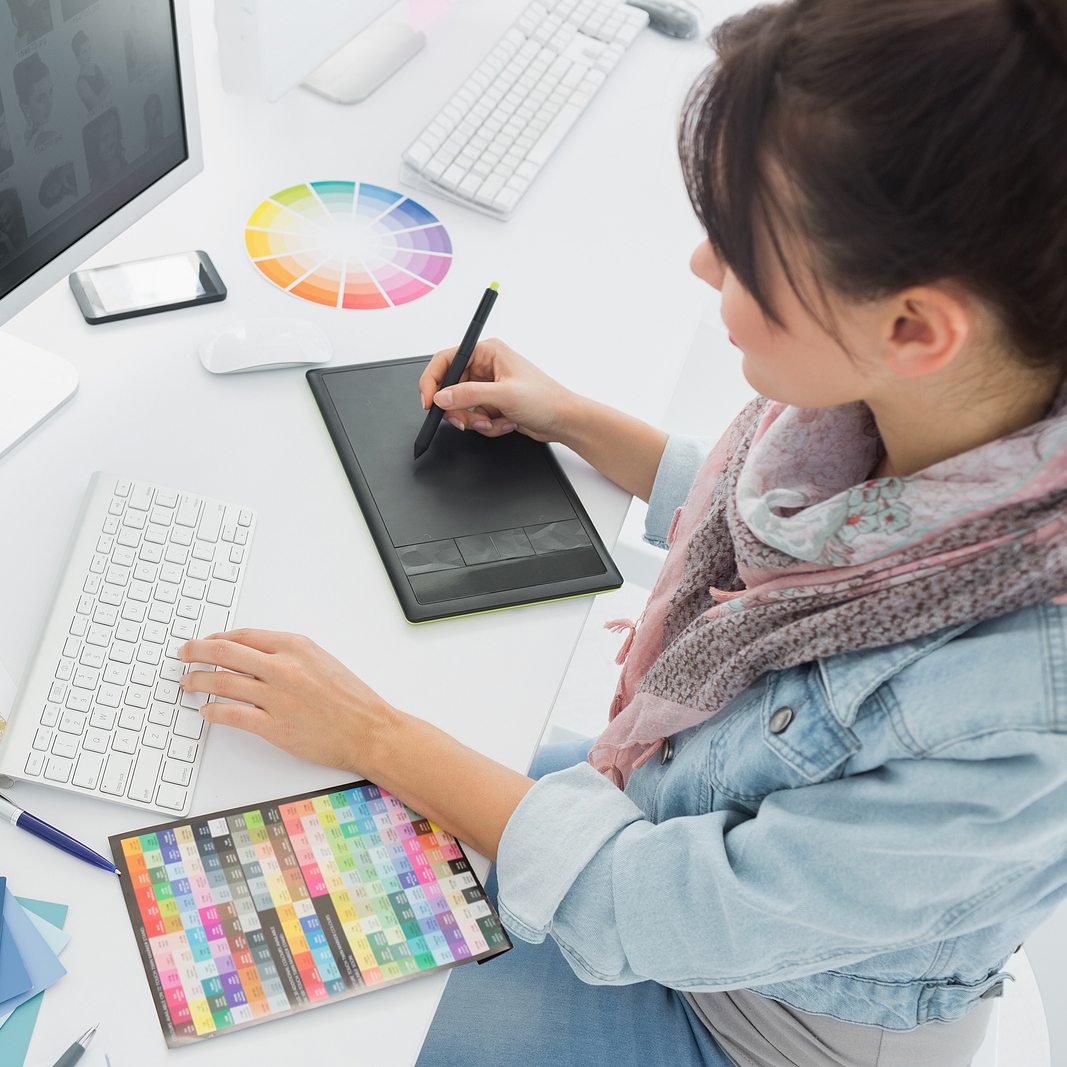You need neither canvas nor clay to strike a chord with your artistic brilliance these days. The digital world allows for boundless expression and is much more forgiving in correcting mistakes. Digital art can be an invigorating hobby or a rewarding career path, provided you have the drive and discipline to learn and persevere. What else do you need as a budding digital artist? Continue reading to find out!
Choose the Right Gear
There's no getting around it – if you want to be a digital artist, you'll need a device to draw or model on. The good news is that you likely already have one. For example, desktop users with a five-year-old system or younger have pretty much everything they need to start 3D modeling and animation.
Drawing requires a graphics tablet since a mouse can’t simulate a pen or brush’s subtle pressure differences. Some digital artists use tablets and even smartphones in combination with styluses to make amazing pieces. None of these devices needs to be expensive, so choose what makes sense for you now and upgrade later.
And the Right Software
The variety of digital art programs is intimidating. Options range from decades-old industry standards to open-source yet powerful freebies. Start by choosing what kind of artist you want to become—illustrator, designer, 3D modeler, etc. Then, consider what style you want to develop. That should make it easier for you to research software with features that best support your aspirations.
Don’t hesitate to read reviews online and ask art communities for recommendations. Many expensive programs have free trial versions or student discounts you can take advantage of. Take them for a test drive and see which ones feel right. Many skills you'll learn by using one software are transferable to another. Don't be afraid to use free options and transition to paid ones once you're more confident.
Master the Fundamentals
Building your artist's journey on a solid foundation might not sound glamorous, but it will set you up for long-term success. Take the time to internalize lessons on proper drawing techniques, color theory, composition, or topology to avoid forming bad habits. It's easier to practice correctly the first time and build healthy habits than make changes to ingrained errors later. Practice makes perfect, but it also makes permanent.
Use References
Some newbies balk at the idea of using references and develop more slowly because of it. You're at the learning stages, so having real-life or excellent art examples to guide you removes the guesswork and helps hone your skills. Few artists stop using references even after they’ve honed their craft, and there isn't an artist, alive or dead, who hasn't taken inspiration from their peers or surroundings.
There's no shame in using references or straight-up copying someone's work while you're starting. You don't yet know what you don't know. Imitating someone else will let you develop relevant skills faster and eventually allow you to break away from their style and carve out your own.
Create a Portfolio
Once you've created a few artworks you're proud of, show them off. There are several huge art communities online where you can showcase your work to millions of like-minded users. Remember to put your best foot forward, focusing on quality rather than quantity.
If you aspire to make art professionally, tailor the portfolio to showcase your technical and creative skills in a specific area. You might also want to consider a general and specialized portfolio for different clients.
Secure Your Work
You might need several programs to complete a single art project. Some may be subscription-based and require an account, as will any cloud storage provider and portfolio hosting site. Compromised accounts can damage your reputation and expose your project files, leaving you unable to profit from your work. Worse yet, a single compromised account can affect others if you haven't been paying attention to password hygiene.
Knowing this, it's easy to see why a password manager is as integral to your toolkit as your drawing program. An enterprise-level password manager makes securing accounts with unique and hackproof passwords easy. You only have to remember the master password, and you can focus on your art without worrying about breaches.
Although there are many providers, you must select the one that best suits your needs. Some password managers, like NordPass, allow you to share passwords securely with team members. So, if you decide to work with a team, you might opt for one with a similar feature.
Invest in Tutorials & Courses
We’re living in the golden age of educational opportunities for artists. Even a cursory YouTube search will yield more tutorials than you’ll ever know what to do with. An abundance of resources doesn't mean they're all worth your time and adequate for your skill level, though. Consider investing in highly regarded paid courses and tutorials to learn from renowned artists and start right.
Become Part of a Community
Connecting with other artists easily comes with a slew of benefits. Being active in artistic groups fosters a sense of belonging and can be a powerful motivator when feeling an artist’s block. Friendly competitions will help hone your skills. Getting a second or third pair of eyes to look at your artwork during the creation process can make you aware of flaws you wouldn't have considered otherwise.
A group environment is also great for developing your critiquing skills. These are important to becoming a better artist since you’re training yourself to recognize shortcomings while offering helpful advice. Naturally, you’ll also want to get critiqued and will be better prepared to handle inevitable harsh or unsupportive remarks.
Conclusion
Despite GenAI’s disruptions, which continue to echo throughout the digital art landscape, there’s never been a better time to realize your artistic potential. We hope that this short guide will set you on the right path to ultimately provide you with a lifetime of learning, improvement, and the sheer joy of creation.
